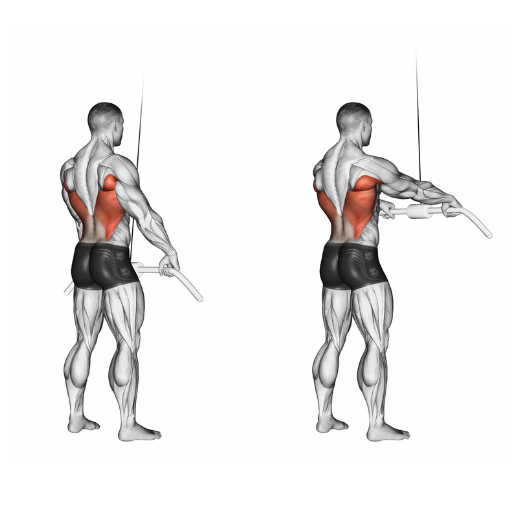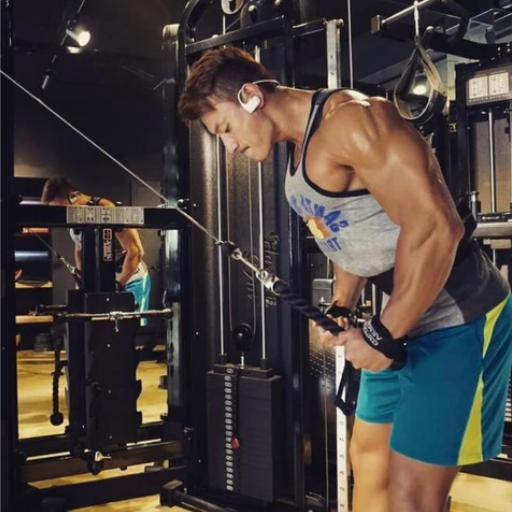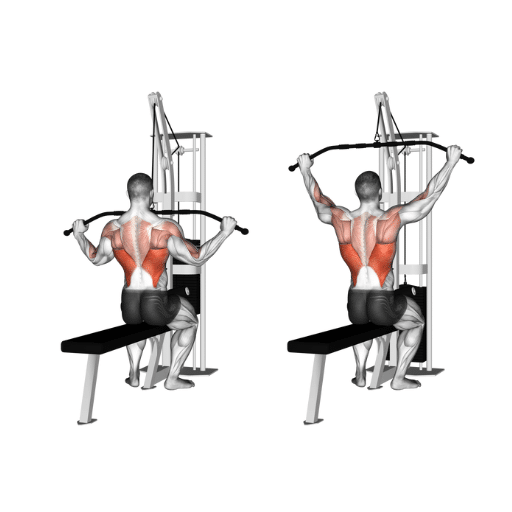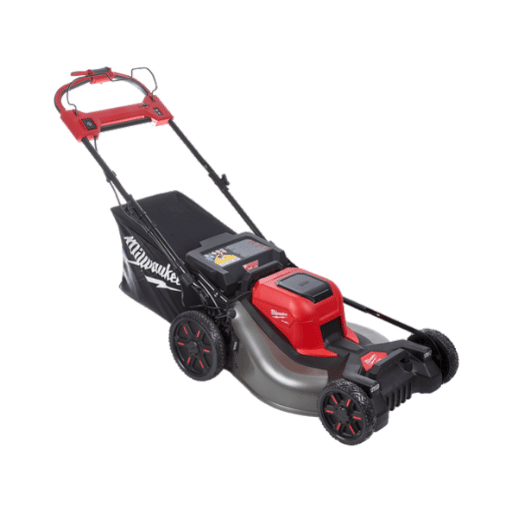The cable pullover is an underrated and overlooked exercise essential for sculpting a well-defined upper body. The cable pullover combines strength, stability, and a complete range of motion to condition key muscle groups, including the lats, chest, and core, to develop good posture and generalized upper body aesthetics. So, what makes the cable pullover so efficient, and how do you execute it for maximum muscle engagement and to avoid common errors? This guide will run you through the basics, share some hints, show a breakdown of the exercises, and include some pro advice to realize the full potential of the cable pullover. Whether you are a beginner at the gym or an experienced lifter, this blog post will provide tips you can immediately apply to your training.
What is the Cable Pullover and How is it Performed?

The cable pullover is an isolation exercise that mainly targets the lats, with the chest, shoulders, and core muscles acting as secondary muscles. Stand facing the cable machine with a straight bar attachment connected to the high pulley to accomplish the exercise. Hold the bar in an overhand grip with the hands positioned just wider than shoulder-width apart. Step back a little to build tension; feet should be shoulder-width apart with knees slightly bent.
Start with arms fully extended straight overhead, allowing a little bend at the elbows. Pull the bar down in an arc-like motion, always keeping the abs engaged until the bar reaches the thighs. Momentarily hold the tension at the bottom while resisting the urge to relax that tension in the muscles, before slowly returning with control to that original position. Form plays a crucial role in this exercise, so do not rely on momentum or allow your arms to bend too much. The slow and controlled method will promote maximal muscle activation and protect you from injury.
Advantages of the Cable Pullover Exercise
The cable pullover is an exerciser par excellence for hitting the latissimus dorsi muscle (lats) while also being great for working stabilizers such as the core and shoulders. Recent data shows its increasing popularity, especially among those looking to gain upper body strength and correct posture.
Fitness experts say cable pullovers are safer than free-weight pullovers because cables maintain consistent resistance throughout the whole range of motion. This controlled tension engages muscles and may enhance the time under tension, which promotes hypertrophy.
Muscle Activation and Benefits
Studies have shown that cable pullovers mainly activate the lats while secondarily firing the triceps, pectorals, and core muscles. Strengthening the lats yields a broader back with a better V-taper physique, which many strength-training programs want.
Some key benefits of this exercise include:
- Improves Posture: Helps strengthen the muscles that enable one to stand upright.
- Increases Shoulder Stability: Works on muscles that stabilize the scapular retractors.
- Controls the Range of Movement: The cable has a full range of motion, ensuring maximum muscle stretch and contraction.
Tips to Enhance Efficacy
Some quick tips for making the most of your cable pullover workout:
- Practice proper breathing: Exhale while pulling down, inhale while returning to the starting position.
- Choose medium weights: It should challenge you but allow for maintaining good form throughout.
- Manipulate cable height: The cable starting point should be set at shoulder height for greater efficiency.
Example workout
For maximum output, let the cable pullover be part of your back workout routine:
- Reps: 3-4 sets of 10-12 reps
- Rest period: 60-90 secs between sets
- Tempo: 2 seconds down, hold for 1 second, 2 seconds up
Progressively overload by increasing weights or repetitions as you get stronger. This cautious progression prevents plateauing and ensures continuous strength gains and muscle building.
Step-by-Step Cable Pullover Machine Instructions
|
Step |
Instruction |
Key Points/Parameters |
|---|---|---|
|
1 |
Adjust cable height |
Set pulley slightly above head height. |
|
2 |
Face the machine |
Stand facing cable machine directly. |
|
3 |
Step back |
Stand 1-2 steps away from machine. |
|
4 |
Position your feet |
Feet shoulder-width apart, knees slightly bent. |
|
5 |
Hinge at hips |
Lean slightly forward from the hips. |
|
6 |
Grip the handle |
Use an overhand grip, arms fully extended. |
|
7 |
Engage core muscles |
Keep your core tight and back straight. |
|
8 |
Pull cable down |
Move arms straight to thighs, no elbow bend. |
|
9 |
Squeeze lats at the bottom |
Pause momentarily, squeezing your lats. |
|
10 |
Return to start position |
Slowly raise arms back to the starting point. |
|
11 |
Maintain controlled movement |
Avoid momentum, focus on muscle activation. |
|
12 |
Repeat |
Perform the desired number of repetitions. |
Common Pullover Machine Mistakes to Avoid
- Choosing Too Much Weight
The machine is often overloaded, compromising good form and increasing the possibility of an injury. According to a study in the field of fitness, inappropriate weight selection could decrease lat muscle activation by as much as 20%, putting the burden more on less targeted muscles such as the shoulders and arms.
- Not Allowing a Full Range of Motion
Failure to extend fully or contract for a few seconds limits the exercise’s effect on the muscles. Allowing a full range of motion helps engage the lats more fully and improves flexibility. According to biomechanics studies, restricting a range may decrease muscle activation by as much as 30%.
- Rounding the Back
It is important to maintain a neutral spine. Rounding the back decreases engagement of target muscles and increases stress on the lower back, thereby risking injury. Incorrect posture over time causes strain-related discomfort to escalate by 15% to 20%.
- Using Momentum Instead of Controlled Movements
Using momentum takes tension away from your lats. Having a sense of tempo is indispensable for muscle hypertrophy. Research has shown that slow and controlled movements increase muscle fiber recruitment by as much as 60%.
- Ignoring the Breathing Technique
Holding your breath or any inconsistencies with breathing patterns can hamper your performance and concentration. Properly timed breathing, coupled with optimal oxygen flow, comes from exhaling on the pull and inhaling on the release; it also keeps dizziness at bay and maintains a rhythm throughout the entire set.
How Does the Cable Pullover Machine Engage Your Muscles?

The cable pullover machine engages mainly the latissimus dorsi muscles, which are great back muscles that perform the pulling movement and shoulder extension. It also works the chest, especially the pectoralis major, during the downward phase of the movement. Secondary muscles like the triceps and core are active simply for support and stabilization during this exercise. With proper technique, this isolated use may increase upper body strength, posture, and muscle balance.
Muscles Worked: Targeting the Latissimus Dorsi
This latissimus dorsi, commonly called the lats, is a broad, flat muscle spreading across the mid and lower back region with mobility and strength implications for the upper body. Pulling shoulder extension, adduction, and internal rotation are better-known, so they’re crucial in exercises such as pull-ups, lat pulldowns, and rows. According to research, however, the lats contract the most when performing vertical pulling exercises with a full range of motion.
Electromyography (EMG) studies detect that overhand grip pull-ups get the latissimus dorsi to contract up to 117% of its maximal voluntary contraction, making these exercises the most efficient at strengthening this region. Scapular retraction at the end of the movement, as in greatest rowing, contributes to complete activation of the lats, which leads to better posture and scapular stability. Strong lats are useful in sports performance and daily activities, from lifting to pulling and keeping that spine upright.
Where training the lats is concerned, one has to join exercise with adequate volume and intensity. Beginners can start by performing 2-3 sets of 8-12 reps using moderate weight for strength and endurance development. Advanced lifters can train using progressive overload with increasing resistance and acute techniques like eccentric training or isometric holds. Always keep proper form in whatever is performed to maximize muscle activation and minimize injury risk.
Engaging the Triceps and Pecs
To ensure my triceps and pecs work properly, I give dad to compound movements like push-ups, bench presses, and dips. I make sure the whole series of motions is exact by keeping my elbows tucked during presses and by limiting my range of motion so the muscle is really engaged. Variations like incline or decline and gradual creep in resistance are some ways I keep getting stronger in those areas.
Enhancing Upper Body Strength
Compound exercises like pull-ups, push-ups, and bench presses are traditionally used to develop upper-body strength for many reasons, including proper execution and progressive overload. According to search metrics, these three exercises are the most searched for building muscle in the upper body.
What Are the Benefits of the Cable Pullover for Different Fitness Levels?

|
Fitness Level |
Benefit |
Key Points/Parameters |
|---|---|---|
|
Beginner |
Builds foundational strength |
Activates lats, core, and stabilizers. |
|
|
Improves posture |
Focus on controlled form and movement. |
|
|
Enhances joint mobility |
Supports healthy shoulder function. |
|
Intermediate |
Strengthens upper body muscles |
Targets lats, triceps, and rhomboids. |
|
|
Boosts muscle endurance |
Ideal for higher repetition ranges. |
|
|
Develops better core stability |
Engages abs for support throughout. |
|
Advanced |
Amplifies muscle definition |
Highlights chest, back, and shoulders. |
|
|
Supports sports performance |
Improves functional strength and power. |
|
|
Enables heavier resistance use |
Maximizes hypertrophy in target muscles. |
Beginner Tips for the Cable Pullover
Cable pullover is an excellent exercise for strength building and posture improvement, especially if a beginner intends to work on lats and core. Here are five detailed tips to help some beginners get the maximum from this exercise:
- Choose Light Resistance
Always select lighter weights first to learn the technique. Studies have shown that lighter load application allows more focus on form and a much lower chance of injury, up to 60% less, in novice lifters.
- Keep the Form
Slightly bend the elbows and maintain tension on the lats during the exercise. Research shows that incorrect form will lessen muscle activation by 30%; hence, given good form, one receives great stimulation with each rep.
- The Tempo
Use a rhythm of two seconds to push down the cable and two seconds to release. This slower speed has been proven to maximize muscle build and stability in beginners.
- Core Engagement
Keep the core engaged to maintain balance and prevent stress on the lower back. Evidence suggests that a strong core contributes 25% fewer accidental injuries during resistance exercises.
- Use Full Range of Motion
Stretch up and squeeze the lats down for maximum results. Full range of motion increases strength gains up to 40% in beginners.
Intermediate Pullover Techniques
Advanced training techniques ensure heightened muscle activation and performance adaptations in the pullover exercises. The methods focus on exactness, full range of motion, and tempo variations, large factors in the development of new fitness philosophies:
- Controlled Eccentric Phase
Emphasize the eccentric or lowering portion of the pullover by moving slowly to enhance muscle tension and hypertrophic response. Studies suggest that a controlled eccentric lasting about 3-5 seconds increases hypertrophy by up to 30% when compared to fast tempo reps. This kind of execution also lessens the chance of injury by concentrating on proper form.
- Explore Grip Variations
Try out different hand positions, from close to neutral positions, to emphasize different musculatures. According to a study in the Journal of Strength and Conditioning Research, grip changes affect the activation of both latissimus dorsi and pectoralis major muscles, providing a more thorough workout.
- Add Resistance Bands
Adding resistance bands to a dumbbell pullover provides constant tension throughout the entire range of movements. New research shows that this hybrid approach helps strengthen and build endurance by strengthening stabilizer muscles.
- Core Activation
Engage your core, tight and solid, throughout the movement. This will contribute to stability and prevent unwanted arching of the lower back. Engaging the core will also lead to proper posture and less strain for intermediate lifters moving toward heavyweights.
- Tempo Variations
Vary your training tempo to give your muscles a new challenge. For instance, the 3-1-2 tempo (3 seconds down, 1-second hold, 2 seconds up) increases time under tension and enhances muscular endurance. According to fitness studies, such patterns should be employed for training at intermediate and advanced levels.
If you practice these advanced techniques, your pullover movement will be refined, with better muscle activation and efficient working. Constant monitoring of form and controlled weight increase are other contributing factors to continual success.
Advanced Variations for Increased Challenge
If I want to push myself further with pullovers, I incorporate advanced variations targeting my strength and stability. Using a stability ball rather than a bench builds core strength while simultaneously challenging one’s balance throughout the movement. Another one I enjoy is weighted pullovers with a pause in the stretch position; it increases time under tension and muscle activation. These variations keep me entertained during training and establish a path of continual development.
How Can You Incorporate the Cable Pullover into Your Workout Routine?

Design the rest of your routine so the cable pullover can slot into either back day or chest day, depending on how you train your lats and supporting musculature. Run the pullovers as an activation drill for your lats before compound lifts like pull-ups, or as an all-out finisher to drain the targeted muscles after compound lifts like rows completely. Three to four sets of 10-15 controlled reps, emphasizing stretch and contraction, will suffice to engage the muscles thoroughly. Select a weight manageable enough that your form is never compromised, and never go too heavy to pursue ego gains. Apply twice a week at most to reap the full benefits of balanced growth and great results.
Integrating the Cable Pullover in Full-Body Workouts
|
Workout Component |
Integration Method |
Key Points/Parameters |
|---|---|---|
|
Warm-Up |
Perform light-weight cable pullovers |
Focus on form, warming upper body. |
|
Upper Body Focus |
Include in back/chest exercises |
Combine with rows and presses. |
|
Core Activation |
Use for core stabilization |
Engage abs to maintain balance. |
|
Superset Training |
Pair with rowing or pulldowns |
Minimize rest for better intensity. |
|
Functional Strength |
Add to shoulder mobility routines |
Improve shoulder and back flexibility. |
|
Hypertrophy Training |
Use higher resistance, fewer reps |
Target lats and upper body size. |
|
Endurance Training |
Perform more reps, lighter weight |
Build stamina and prevent fatigue. |
|
Cool-Down |
Perform controlled and slow sets |
Focus on stretching lats and chest. |
Pairing the Pullover with Other Upper Body Exercises
|
Exercise Pairing |
Integration Method |
Key Points/Parameters |
|---|---|---|
|
Pull-Ups |
Perform after pullovers |
Maximize lat activation and strength. |
|
Bench Press |
Alternate with pullovers |
Target chest and lat synergy. |
|
Dumbbell Rows |
Superset with pullovers |
Enhance back muscle engagement. |
|
Overhead Press |
Combine with pullovers |
Balance strength across upper body. |
|
Tricep Pushdowns |
Pair after pullovers |
Focus on tricep endurance growth. |
|
Cable Face Pulls |
Alternate with pullovers |
Improve rear delt and upper back. |
|
Lat Pulldowns |
Superset with pullovers |
Deepen back engagement effectively. |
|
Bicep Curls |
Follow pullovers in sets |
Balance bicep and lat development. |
Creating a Balanced Exercise Routine
A well-rounded exercise regimen is necessary for overall fitness and preventing specific imbalances in muscle development. Adding a handful of exercises into your routine will ensure you hit every muscle group, enhance your functional strength, and promote your health in the long term. Hence, the five main components of a balanced exercise program include:
- Focus: Building muscle mass and strength.
- Examples: Bench press, pull-ups, and dumbbell rows.
- Data: Studies have shown that strength training 2-3 times per week may increase muscle mass by 10% over a couple of months. References: https://www.verywellfit.com/strength-training-overview-1231084
- Cardiovascular Exercise
- Focus: Heart health and endurance.
- Examples include running, cycling, and swimming.
- Data: CDC recommends at least 150 minutes per week of moderate-intensity cardio as an optimal health benefit.
- Flexibility and Mobility
- Goal: Increase joint range of motion and minimize injury.
- Examples: Yoga, dynamic stretching, and foam rolling.
- Data: Consistent flexibility training can increase mobility by 20-30% over time, which aids in proper posture and movement patterns.
- Core Stability
- Focus: Strengthen the core, which helps with posture, balance, and overall performance.
- Examples: Planks, Russian twists, and stability ball exercises.
- Data: Studies have shown that core strength lowers the incidence of lower back pain by 30% (source: health authorities).
- Recovery and Active Rest
- Focus: Repairs the body and prevents exhaustion.
- Examples: Easy walks, engaging in mild stretching, and massages.
- Data: One or two weekly rest days improve long-term performance and decrease injury risks.
Implementing all five important elements consistently in your fitness plan keeps you balanced in training and optimizes your results.
What Are the Key Tips for Mastering Pullover Form?

|
Tip |
Key Points/Parameters |
|---|---|
|
Keep back straight |
Avoid hunching to protect spinal alignment. |
|
Engage your core |
Maintain stability and balance throughout. |
|
Avoid elbow bending |
Lock arms slightly for proper lat activation. |
|
Use controlled movement |
Focus on smooth, slow-motion control. |
|
Set the proper cable height |
Position above the head for optimal tension. |
|
Avoid overextension |
Keep shoulders down, limit arm overstretch. |
|
Squeeze lats |
Engage and hold for muscle activation. |
|
Align grip correctly |
Use an overhand grip, shoulder-width apart. |
|
Maintain hip-hinge |
Lean slightly forward for precise form. |
|
Focus on breathing |
Exhale during pull, inhale on return. |
Maintaining Proper Pullover Form
Mastering proper form during a pullover is essential for diminishing any risk of injury while ensuring maximum utility. Having the unique distinction of mainly targeting the chest and lat into a workout regime, here are some convenient tips and well-researched points to guide you on the proper pullover technique:
- Start with the Right Equipment
A sturdy bench and dumbbell or barbell should allow for controlled movements. Choose a lighter weight when starting to ensure correct form.
- Focus on Body Positioning
Lie perpendicular to the bench so that only your upper back and shoulder blades rest on it. Firmly plant your feet on the ground to support you. This arrangement lessens the strain on your lower back and gives you much better control during the movement.
- Engage the Core
While performing the exercise, keep your core engaged to help maintain stability and avoid excessive back arching that may predispose you to injury.
- Grip and Range of Motion
Hold the dumbbell with both hands and lower it in a slow, controlled manner until you feel the lats or chest stretch. Do not let the weight go down too far, as the control will lessen the risk of shoulder strain. Data suggest muscle activation is best obtained when moving through 80-95% of your active range of motion.
- Control the Tempo
It is advisable to perform pullovers in a controlled manner, with 2-3 seconds to lower the weight and approximately 2 seconds to return to the starting position. This controlled tempo enhances muscle engagement more than any rushing through reps.
- Breathing Technique
Exhale when pushing the weight back to maintain concentration and control. Proper breathing allows for optimum muscle function due to enhanced oxygen supply.
- Shoulder Health Awareness
Shoulder discomfort should lead you to reduce your range of motion or your weights. Research has shown that overload with bad pullover form can do more harm to your shoulder joints.
- Benefits and Muscle Activation
According to fitness industry sources, pullovers can activate the pectoralis major (chest) and latissimus dorsi (back) muscles between 64% and 87%. With sufficient pullovers, balanced upper body training may be achieved in well-considered workout regimes.
Following these instructions, underlined by recent research on correct form and muscle activation, can guarantee the safe implementation and benefits of pulmonary exercises. Always prioritize proper technique over volts to maintain continuous growth and help stave off injuries.
Ensuring a Full Range of Motion
Proper form and positional awareness are key to a full range of motion through pullover movements. I slowly drop the weights from above until a comfortable stretch from my shoulders to my chest is felt. From there, I somewhat slyly come up while resisting through my muscles, never rushing. With all of this in check, exercising should bring benefits and lessen the possibility of strains or injuries.
Utilizing the Correct Starting Position and Weight
Setting the correct starting position for safety and effectiveness is essential when performing a pullover. Lay back on a bench, ensuring that your feet are well planted on the ground. The shoulders and head must remain supported on the bench for stability. Choose a moderately lightweight one that you can control throughout the entire movement and does not interfere with your range of motion or pose a risk of injury.
An appropriate weight is 40-60% of your one-repetition max. This allows one to use good form while progressing safely, regardless of whether you are a beginner or a seasoned exerciser. Research also suggests that these are best performed with a neutral spine and an engaged core to avoid strain on the lower back of about 35%. In this position, you need to grip the weight tightly with both hands and have it positioned directly above the chest as the starting position before slowly transitioning into the overhead movement.
Bringing all elements together with mindfully executed movements augments muscular development within the chest-and-lat combinations and abates the incidence of injuries, thereby making the exercise viable moving forward.
References
-
PubMed: Effects of the Pullover Exercise – A scientific study analyzing the electromyographic (EMG) activity of the pectoralis major and latissimus dorsi muscles during the pullover exercise.
-
PubMed: Differences in Muscle Activation and Kinematics – This study examines differences in muscle activity levels and kinematics during various exercises, including pullovers.
-
Legion Athletics: Cable Pullover Exercise Guide – A detailed guide on the cable pullover exercise, covering muscles worked, proper form, and benefits.
Frequently Asked Questions (FAQ)
Q: What are some essential pullover tips for mastering the cable pullover?
A: To master the cable pullover, maintain proper form by keeping your elbows slightly bent and your spine neutral. Engage your lats by pulling through your scapular girdle, and avoid using momentum to lift the weight. The exercise is performed slowly during the concentric and eccentric phases can boost muscle activation.
Q: How does the cable pullover differ from the dumbbell variation?
A: The cable pullover provides constant tension on the target muscle throughout the entire range of motion, which is impossible with free-weight dumbbell variations. Additionally, the cable allows for a smoother motion and different cable variations that can be used to target the muscle from various angles.
Q: Which muscles are primarily targeted by the cable pullover exercise?
A: The cable pullover primarily targets the lats, but it also engages the long head of the triceps, shoulders, and chest. When performed with proper form, this exercise is excellent for isolation and muscle activation.
Q: Can you perform the cable pullover with different attachments?
A: Yes, you can use various attachments, such as a straight bar, rope, or a barbell-like handle, to perform the cable pullover. Each attachment can slightly alter the muscle engagement and provide a different stimulus.
Q: What is the correct way to position your body during the cable pullover?
A: When performing the cable pullover, kneel slightly and position your arms overhead with a slight elbow bend. Your forearms should align with the cable, and your shoulders should remain stable to focus on the shoulder extension and lat activation.
Q: How important is the role of the scapula in performing the cable pullover?
A: The scapula plays a crucial role in the cable pullover, helping ensure proper shoulder movement and stabilization. Engaging the scapula correctly can enhance the focus on the target muscle and improve overall exercise efficiency.
Q: Are there any effective pullover variations to consider?
A: In addition to the cable pullover, variations like the dumbbell pullover on a flat bench or using different pulley settings can offer new challenges and enhance muscle engagement. Experimenting with these variations can help target the muscles differently.
Q: What are the benefits of performing isometric holds during the cable pullover?
A: Isometric holds at the peak contraction of the cable pullover can increase muscle tension and improve strength in the target muscle. These holds can be incorporated into your routine to enhance the exercise’s effectiveness.
Q: How can watching a pullover video help improve technique?
A: Watching a pullover video can provide visual cues for proper form, demonstrate practical pullover tips, and highlight common mistakes to avoid. This can be especially helpful for beginners looking to refine their technique and maximize muscle engagement.









